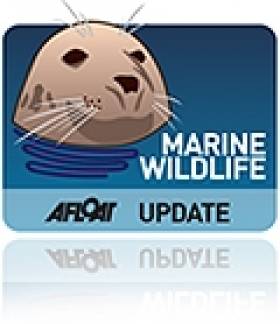Displaying items by tag: Strangford Narrows
Glasgow based Flex Marine Power has issued a Notice to Mariners regarding its activity within the Strangford Narrows in County Down in Northern Ireland.
The turbine mooring system is being decommissioned and there is a workboat, and buoys marking the location.
Strangford Narrows is a narrow six-mile stretch of water with strong tides in the southeast of County Down leading from the Irish Sea into Strangford Lough.
The operations, which will take place between 2nd and 15th August, are part of continued research by Flex Marine Power Ltd in conjunction with Queen's University, Belfast into the performance of tidal turbine moorings in the Narrows.
The work may impede navigation as the workboat will periodically be loading and unloading at Portaferry Quay and transiting between the Quay and the location of the works.
The Notice to Mariners dated 1st August is accessible on the Bangor Marina Facebook page here
Another Humpback Whale Sighting - This Time in Northern Ireland
#MARINE WILDLIFE - The Irish Whale and Dolphin Group (IWDG) has confirmed a new humpback whale sighting, this time in Northern Ireland.
According to the IWDG, this is the third consecutive year that a humpback whale has been spotted in Northern Irish waters, with this sighting being only the fourth ever validated record for the species in the North.
IWDG sightings co-ordinator Pádraig Whooley described it as "an important development [that] highlights a trend towards increased sightings of this large baleen whale species in Irish waters."
He also remarked on the "unusual" location of the sighting in the fast-running waters of the Strangford Narrows at the Ards Peninsula.
The discovery comes just a week after confirmed sighting of two humpback whales at the opposite end of the island of Ireland, off Galley Head in West Cork, as previously reported on Afloat.ie.
Renewable Energy Firms Plan Tidal Array in Wales
Two renewable energy companies have applied for planning permission to install a tidal turbine array off the Welsh coast.
Energy Efficiency News reports that the 10MW array commissioned by RWE npower renewables would consist of seven SeaGen turbines from UK-based Marine Current Turbines (MCT), enough to generate energy for 10,000 homes.
The windmill-like turbines would be installed 1km off Anglesey in north Wales between Skerries and Carmel Head and be operational by 2015.
SeaGen turbines are already operating in Northern Ireland's Strangford Narrows, an installation accredited by Ofgen as Britain's first tital power plant. MCT is also working with ESB International on a 100MW project off the Antrim coast.
The Welsh Assembly has set a target of capturing 10% of tidal and wave energy off the Welsh coast by 2025 as part of its renewable energy plan.
Energy Efficiency News has more on the story HERE.
Protected Seals in Northern Ireland Were Decapitated
A total of 16 were found, mainly grey pups and juveniles - which are both protected under European legislation - were recovered from Strangford Lough and Dundrum Bay.
The Environment Agency said circumstantial evidence indicated interaction with some form of net in at least two cases, but there was no proof the seal deaths resulted from legitimate, licensed fishing activity.
"Neither is there evidence linking these deaths to the marine current turbine being trialled in the Strangford Narrows, as this would not inflict the sharp cuts seen," the agency said.
Declan Looney, senior wildlife inspector from the Northern Ireland Environment Agency, said: "Members of the public can assist by reporting all dead seal strandings to NIEA on 028 4461 5520." More from the Belfast Telegraph HERE.


























































